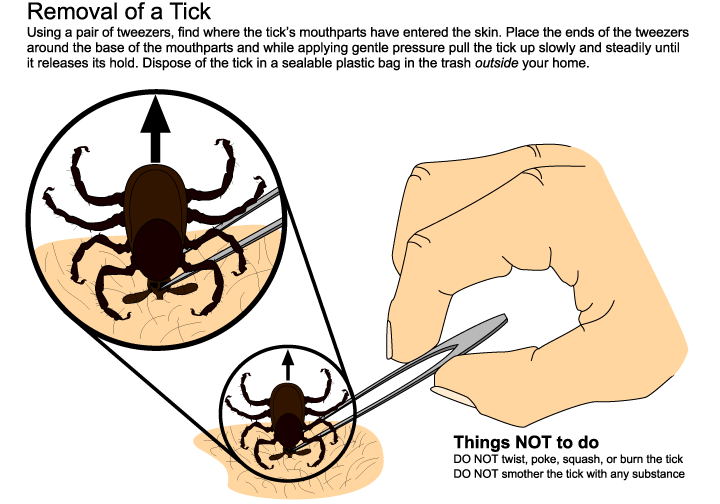Tick Prevention
- Avoid tick habitat during peak tick activity (click here for more information regarding the seasonal activity of the tick species sampled on this project):
- Tick habitat in Indiana may include wooded areas such as deciduous forests with leaf litter, areas covered in tall grass, and areas between forests and fields where deer may frequent (deer can be a host of ticks in Indiana)
- Wear appropriate clothing:
- Long pants and long sleeve shirts
- Tuck pants into socks
- Wear an approved repellent and/or repellent-treated clothing:
- The Centers for Disease Control and Prevention (CDC) suggests the use of repellent products containing a minimum of 20% DEET, picaridin or IR3535 on exposed skin, and 0.5% permethrin on clothes, shoes and any other outdoor gear
- To use a repellent, follow directions listed on the back of the repellent
- Do a thorough tick check after spending time in a potential tick habitat:
- Remove clothing immediately after returning from tick habitat and check the clothing for any crawling ticks
- Shower immediately after returning from tick habitat, check for ticks behind the knees, in the groin, armpits, behind the ears and around the hairline
- Check pets for ticks, if they accompanied you in a tick habitat
- Wash clothes in hot water, and dry on a high heat cycle for 20 minutes to kill any remaining ticks
- If you live close to a wooded area or potential tick habitat, there are several practices you can use to discourage ticks around your home:
- Separate the yard from wooded areas or potential tick habitat using pavers, concrete or other suitable material
- Mow the yard on a regular basis to keep the grass short
- Prevent wildlife from entering private property by fencing off the house and garden from wooded areas (wildlife can be hosts of ticks in Indiana)
- Regularly inspect and clean outdoor equipment (e.g., playground equipment, lawnmower, barbeque grill, etc.)
Tick Removal

Content Source: Centers for Disease Control and Prevention
